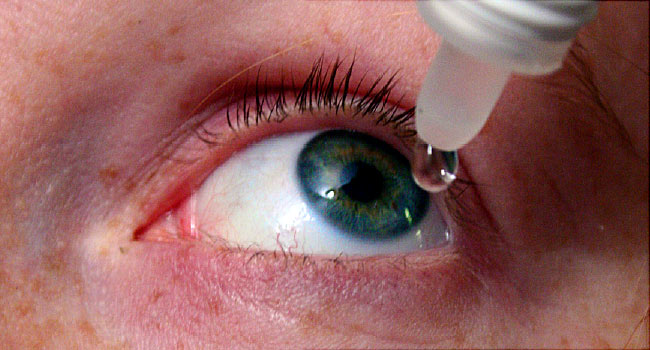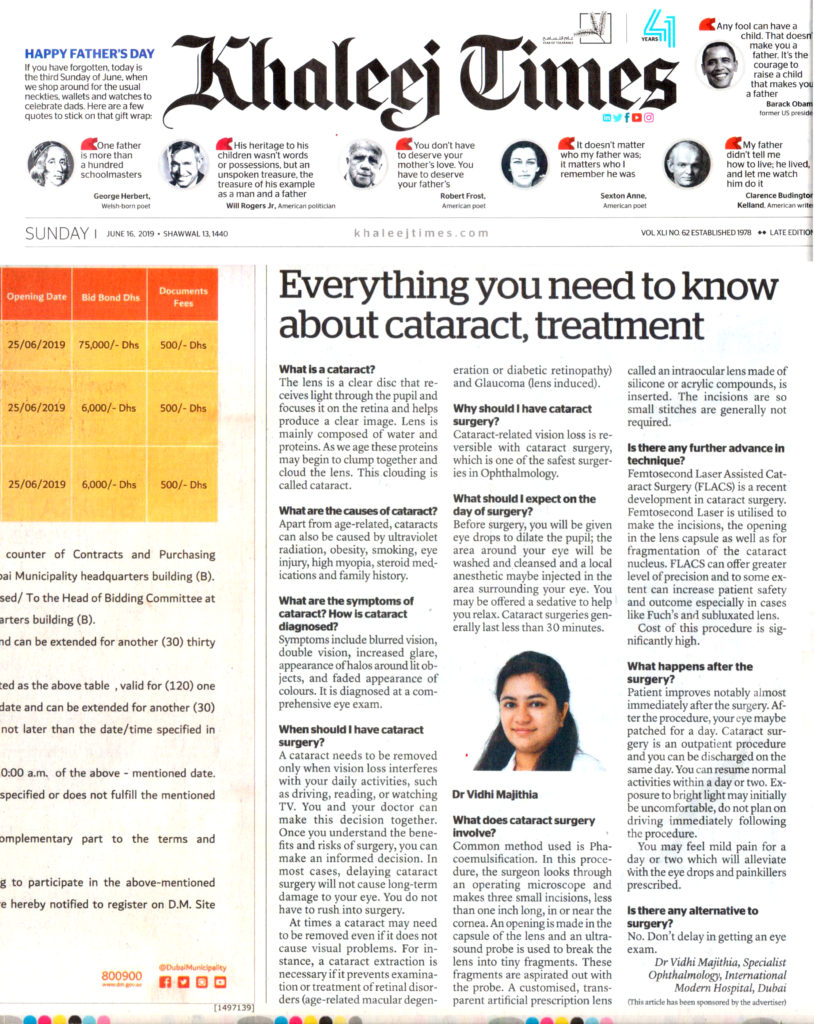What can you do to protect your child’s gift of vision?
Without an iota of doubt, babies born these days are ranking much higher in Intelligence Quotient compared to the previous generations. They are superfast when it comes to learning numbers, languages and for that matter anything under the sun. The millennial babies are grasping their ABCs much before their parents ever could.
However, everything is not rosy with this generation. With the fast-paced life globally, kids these days are falling prey to illness which was a rarity previously. Mum and dad both being busy, kids are being introduced to screens pretty early on whether to calm down their cranky mood or to make them eat their food faster. Research has shown that this is leading to a generation of screen addicts with a high chance of multiple vision problems.
In this article we will try to figure out how parents can secure their child’s gift of vision.
1. Minimum exposure to Electronic Devises:
Ophthalmologists recommend that children take a break after every 30 minutes of reading, writing or playing games on screens like smartphones and tablets. Doctors especially emphasis on reducing the time spent on electronic devices like the later.
According to the American Academy of Pediatrics (AAP), entertainment media should be made available to children for a maximum of 1 to 2 hours a day. Television, laptop and other entertainment media should be avoided for children and infants below the age of 2 since a child’s brain develop rapidly during these years and children learn best by interacting with people, not screens.
2. Incorporating more Outdoor Activity for kids:
Research shows that children who spend more time outdoors have fewer chances of suffering from myopia. Hence, increasing a child’s time spent on outdoor activities like playing in a park, swimming or cycling is helpful. These outdoor activities not just improve physical fitness and socialization skills but improves hand-eye coordination as well. However, it is recommended to avoid outdoors during the hot and humid summer months, especially during the hottest part of the day, typically from 11 am to 4 pm.
3. Protection against sun damage:
To protect your child’s vision from the harmful rays of the sun, invest in good quality sun-gears like sunglasses with 100% UV Protection, umbrellas and hats are also to be incorporated in to our daily outdoor wear.
4. Proper diet:
Vegetables and fruits that are high in lutein and zeaxanthin are helpful in protecting the eyes against free radical damage. These nutrients are found in spinach, kale, avocado, brussels sprout, egg yolk, corn, orange, grapes, kiwi, zucchini etc. Eating fatty fish that are high in Omega 3 fatty acid like salmon and tuna also helps in the development of the eyes.
5. Regular eye check-ups:

Good vision is extremely important to a child’s overall well-being. Doctors highly recommend regular vision check-up for children right after they are born, during infancy (between 6 months to 1 year) and throughout their pre-school and school going years, failing which at least once around age of 4-5, when child starts going to school and any refractive intervention can reverse any visual deficiency.
6. Develop and incorporate healthy eye-care habits:
Ensure there is adequate light when your child is reading or playing. Keep your child 30cm to 40 cm away from the book while he or she reads. The distance between your child’s eye and any electronic device should be minimum 50 cm. Also, it is important to rest your child’s eyes and get at least 8 hours of sleep in a day to avoid putting strains on the eyes.
If you have further queries about how to safeguard your child’s gift of vision, want regular check-ups or looking for treatment, kindly reach out to our experts at IMH. International Modern Hospital Ophthalmology Department offers treatment of eye diseases with high level medical technology including diagnostic, surgery and non-surgical treatment by highly trained and accredited ophthalmologists. Your little one’s window to the world is safe in our hands!








 Like, the under production of tears. Or maybe the tear quality is just not good enough. And often, a combination of both. This is termed tear film instability. Causes for this instability are Meibomian Gland dysfunction, Corneal Surgery, Contact Lens wear, seasonal allergies, Systemic Diseases and long term use of certain eye drops (anti glaucoma).
Like, the under production of tears. Or maybe the tear quality is just not good enough. And often, a combination of both. This is termed tear film instability. Causes for this instability are Meibomian Gland dysfunction, Corneal Surgery, Contact Lens wear, seasonal allergies, Systemic Diseases and long term use of certain eye drops (anti glaucoma). replacement for watery tears. Gels and ointments are also available, and are thicker than eye drops. (Gels usually last longer in the eye and need to be put in less frequently, but can blur the vision.)
replacement for watery tears. Gels and ointments are also available, and are thicker than eye drops. (Gels usually last longer in the eye and need to be put in less frequently, but can blur the vision.)

 Children are not immune to forces that have driven many adults toward healthy lifestyles and spa and wellness therapies. They too are living in an electronic-gadget-obsessed world, crouching over devices, as they’re fed information and images at incredible speed. Children spend more time than ever hunched over glowing screens.
Children are not immune to forces that have driven many adults toward healthy lifestyles and spa and wellness therapies. They too are living in an electronic-gadget-obsessed world, crouching over devices, as they’re fed information and images at incredible speed. Children spend more time than ever hunched over glowing screens.

 Watch for signals of eye problems– Parents should be alert to symptoms that could indicate an eye or vision problem, such as complaints of eyestrain, headaches and squinting when reading or performing other common activities like regular rubbing of the eye etc. Other symptoms to look for include a white or grayish-white coloring in the pupil, one eye that turns in or out, or eyes that do not track in sync together.
Watch for signals of eye problems– Parents should be alert to symptoms that could indicate an eye or vision problem, such as complaints of eyestrain, headaches and squinting when reading or performing other common activities like regular rubbing of the eye etc. Other symptoms to look for include a white or grayish-white coloring in the pupil, one eye that turns in or out, or eyes that do not track in sync together. For school-age children, a vision screening, which is less comprehensive than a dilated eye examination by an ophthalmologist,can be performed by a pediatrician, family physician, nurse or trained technician during regular checkups. If the screening detects a problem, the child may need to see an ophthalmologist — an eye physician and surgeon.
For school-age children, a vision screening, which is less comprehensive than a dilated eye examination by an ophthalmologist,can be performed by a pediatrician, family physician, nurse or trained technician during regular checkups. If the screening detects a problem, the child may need to see an ophthalmologist — an eye physician and surgeon. Beware of television on hand held devices– It is now becoming more and more common for children to suffer from eye strain after staring at screens for hours and hours. This is sometimes known as computer vision syndrome. Watch out for dry, red and sore eyes. Sometimes, children may experience blurry vision and have problems with words moving on the screen because their eyes are not properly aligned. You can avoid eye problems setting in at an early age by making sure that sessions involving near screen work are limited to 30 minutes a time. Make sure that there are plenty of breaks and that outdoor activity is not neglected.
Beware of television on hand held devices– It is now becoming more and more common for children to suffer from eye strain after staring at screens for hours and hours. This is sometimes known as computer vision syndrome. Watch out for dry, red and sore eyes. Sometimes, children may experience blurry vision and have problems with words moving on the screen because their eyes are not properly aligned. You can avoid eye problems setting in at an early age by making sure that sessions involving near screen work are limited to 30 minutes a time. Make sure that there are plenty of breaks and that outdoor activity is not neglected.



